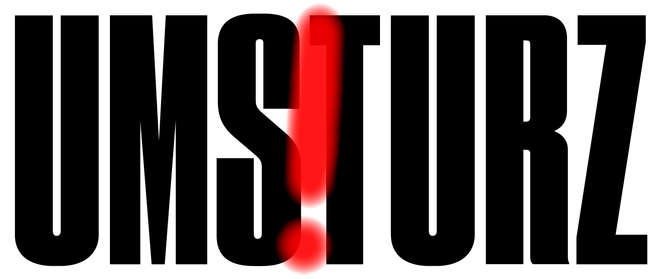Barrier-free and inclusive programmes
The Deutsches Historisches Museum would like to make the exhibition “1917. Revolution. Russia and Europe” accessible to as many people as possible.

Exhibition for everyone
The exhibition addresses many different senses and invites visitors to see, hear, touch and smell objects at different stations. The design is largely barrier-free. All exhibition texts are in German and English. The main texts are also available for blind and visually impaired people in German Braille and large print in black-on-white as well as white-on-black, and in Easy Language for people with learning difficulties, as well as in German Sign Language for deaf people. These offers are correspondingly indicated in the texts. The objects are displayed at different heights, and most showcases are accessible to wheelchairs. The high contrast of the colours makes them easier to see.
Inclusive Communication Stations (ICS)
A tour passing all of the twelve “Inclusive Communication Stations” (ICS) in the exhibition is available. The stations have, for example, a three-dimensional social pyramid of the tsarist empire that can be felt by hand, a clip from the film “October” with audio description, Lenin’s tactile devotional objects, descriptions of revolutionary music in German Sign Language or the aroma of tea produced by Russian emigrants. The objects, models and media take up the main themes of the exhibition and communicate them interactively for visitors without prior knowledge of the topic. Every station addresses several different senses, so that people with partly impaired senses can profit from them. The textual information is available on a six-sided, rotatable text drum, offering German, English, Easy Language, Braille and German Sign Language and encouraging an exchange of ideas among visitors. All stations have a holder for guide canes and long canes.
Guide system and aids
Up to the section on the founding of the Soviet Union, the tour through the exhibition is arranged chronologically and is prescribed up to this point. A tactile floor guide system allows blind and visually impaired people to find their way on their own passed the room texts and twelve Inclusive Communication Stations. The guide system begins at the entrance to the Exhibition Hall and leads to the ticket counter, the audio devices, the cloakroom, the entrance to the exhibition and to the toilets. At the entrance to the exhibition, a tactile layout play helps to find one’s orientation in the exhibition space. A description of the exhibition architecture is available in an audio version and in German Braille. Rollators, wheelchairs and folding stools can be borrowed at the cloakroom.
Inclusive offers in the audio guide
The audio guide is available in German, English and Russian, and also offers additional audio descriptions in German.
Inclusive tours on Wednesday
The public tour on Wednesday encourages an exchange of ideas among the tour participants and has additional offers as well: In the tour on the first Wednesday in the month the objects will be described more extensively; on the second Wednesday the tour and the discussions will be translated simultaneously into German Sign Language; and on the third Wednesday in the month the tour is in Simple Language. These inclusive Wednesday tours all start at 3 pm.
The additional inclusive offers can also be booked for groups.